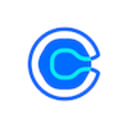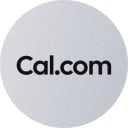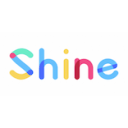Calendly vs Cal.com: Which scheduling software fits your needs?
- 01Calendly vs Cal.com: overview
- 02What's the difference between Calendly and Cal.com?
- 03Calendly pros and cons
- 04Cal.com pros and cons
- 05Calendly compared to Cal.com
- 06Cal.com compared to Calendly
- 07Features comparison
- 08Calendly vs Cal.com: Which is the best for your business?
- 09Promotions on Scheduling software
- 10Alternatives to Calendly & Cal.com
Whether you're a freelance consultant or managing a large organization, efficient scheduling is vital to your productivity and success. Fortunately, various tools are available to streamline the scheduling process, allowing you to manage appointments, send automated reminders, and customize your booking experience.
In this article, we discuss two popular scheduling tools—Calendly vs. Cal.com. Both platforms aim to simplify scheduling and improve your time management, yet they cater to different audiences and offer distinct features. We’ll examine each solution's pros and cons, explore their unique functionalities, and highlight the main differences to help you decide which tool is the best fit for your needs.
Calendly vs Cal.com: overview
Calendly and Cal.com are leading contenders in scheduling platforms, each offering distinct features and advantages tailored to different user requirements.
Calendly is renowned for its simplicity and ease of use. It provides a straightforward solution for scheduling meetings, with features like automated reminders, customizable event types, and seamless integration with popular calendar systems like Google Calendar and Outlook. Conversely, Cal.com stands out for its flexibility and customization capabilities. As an open-source platform, Cal.com allows users to tailor the scheduling experience to their specific needs, offering features such as custom branding, API access, and community-driven enhancements.
Now, let's delve into the Calendly vs. Cal.com comparison to assist you in making an informed decision when it comes to choosing the right scheduling platform for your specific needs. We will explore their core features, target audiences, ease of integration, and customization options, ensuring you find the perfect fit for your scheduling requirements.
What's the difference between Calendly and Cal.com?
Calendly and Cal.com share many standard features of scheduling platforms, including calendar integrations, automated reminders, and customizable booking pages. However, a significant difference between the platforms lies in their design philosophies and target audiences, which influence the features they offer.
Calendly is designed for simplicity and ease of use, making it ideal for individuals and businesses seeking a quick and reliable scheduling solution. It offers features like automated scheduling, integration with popular calendar services like Google Calendar and Outlook, and the ability to create different event types. Calendly’s intuitive interface and straightforward setup process allow users to start scheduling meetings in minutes, which is particularly beneficial for professionals looking for a no-fuss tool to manage appointments.
In contrast, Cal.com is built with flexibility and customization in mind, catering to developers and businesses that need more control over their scheduling processes. As an open-source platform, Cal.com offers the ability to customize the scheduling experience extensively, including features like custom branding, API access, and community-driven enhancements. This makes Cal.com especially appealing to organizations with unique scheduling requirements or those that want to integrate the platform deeply into their existing systems.
Another key difference between Calendly and Cal.com is their pricing models. Calendly offers a tiered pricing structure with a free basic plan and premium features available at higher subscription levels. Cal.com, being open-source, provides users with the flexibility to self-host and customize the platform without additional costs, though managed hosting options are also available for a fee.
The choice between Calendly and Cal.com depends on the user’s needs: Calendly for those seeking a straightforward, user-friendly solution and Cal.com for those requiring a highly customizable and flexible scheduling platform.
Calendly pros and cons
What are the advantages of Calendly?
- User-friendly interface: Calendly offers an intuitive and straightforward user interface that makes it easy for users to set up and manage appointments. The platform’s simplicity is ideal for both tech-savvy individuals and those less familiar with technology.
- Seamless integrations: Calendly integrates seamlessly with popular calendar services such as Google Calendar, Outlook, and Apple Calendar. It also offers integrations with various third-party applications like Zoom, Slack, and Salesforce, making it easier to incorporate scheduling into existing workflows.
- Automated scheduling: With features like automatic time zone detection, buffer times between meetings, and customizable event types, Calendly streamlines the scheduling process and reduces the back-and-forth communication typically associated with setting appointments.
- Customizable booking links: Calendly allows users to create personalized booking links and pages, which can be branded and tailored to reflect a professional image. This is particularly useful for businesses that want to maintain consistent branding across all customer interactions.
- Free basic plan: Calendly offers a free basic plan that includes essential scheduling features, making it accessible to individuals and small businesses who need a simple solution without the cost.
What are the disadvantages of Calendly?
- Limited features on free plan: While the free plan is a great entry point, it lacks advanced features like group scheduling, team management, and certain integrations, which are only available on the paid tiers.
- Customization constraints: Compared to open-source or more flexible platforms, Calendly offers limited customization options. Users looking for extensive personalization may find the platform somewhat restrictive.
- Pricing for teams: While Calendly is affordable for individual use, costs can increase significantly for teams requiring advanced features. Larger teams might find the pricing structure less competitive compared to other solutions.
- No built-in payment processing: Calendly does not offer native payment processing capabilities for scheduling paid appointments, although it can integrate with third-party payment processors like PayPal and Stripe, which may require additional setup.
- Limited advanced features: For users needing complex scheduling features such as comprehensive reporting or deeper CRM integration, Calendly may lack some of the advanced functionalities found in more robust scheduling platforms.
Compare Calendly to other tools
Cal.com pros and cons
What are the advantages of Cal.com?
- Open-source flexibility: Cal.com is an open-source platform, which means users can customize and modify the software to meet their specific needs. This flexibility is ideal for developers and businesses that want to tailor the scheduling experience to their unique requirements.
- Highly customizable: Cal.com allows for extensive customization, including custom branding, themes, and workflows. Users can create a scheduling interface that aligns perfectly with their brand and operational processes.
- Self-hosting option: Users have the option to self-host Cal.com, providing complete control over data privacy and security. This is particularly beneficial for organizations with strict data compliance needs or those wanting to maintain complete control over their scheduling infrastructure.
- API access: Cal.com offers robust API access, enabling developers to integrate the platform deeply into existing applications and systems. This allows for creating bespoke solutions that fit seamlessly into complex workflows.
- Community-driven development: Being open-source, Cal.com benefits from contributions and enhancements from a community of developers. This can lead to innovative features and improvements driven by real-world user needs.
What are the disadvantages of Cal.com?
- Steeper learning curve: Due to its flexibility and customization options, Cal.com may have a steeper learning curve compared to simpler scheduling tools. Users without technical expertise might find setup and customization more challenging.
- Limited out-of-the-box features: While highly customizable, Cal.com may lack some of the out-of-the-box features available in more established scheduling tools. Users may need to invest time in configuring the platform to access desired functionalities.
- Potential maintenance overhead: For those opting to self-host, there can be additional maintenance and update responsibilities. Managing a self-hosted solution requires technical expertise and resources to ensure smooth operation and security.
- Fewer native integrations: Compared to competitors like Calendly, Cal.com may offer fewer native integrations with popular third-party applications, potentially requiring additional development work to achieve the same level of integration.
- Variable costs: While the open-source nature allows for potentially lower costs, organizations that require managed hosting or additional development for custom features might face higher costs compared to using a ready-to-go SaaS platform.
Calendly compared to Cal.com
Calendly and Cal.com are both scheduling platforms designed to streamline appointment management, but they cater to different user needs. Calendly is known for its user-friendly interface and seamless integration with popular calendar apps like Google Calendar and Outlook, making it ideal for individuals and small businesses seeking a straightforward scheduling solution.
In contrast, Cal.com is an open-source platform offering extensive customization and flexibility, appealing to developers and businesses requiring tailored scheduling solutions. Cal.com allows users to self-host and modify the software, providing greater control over data and customization, while Calendly offers a more ready-to-use experience with robust third-party integrations.
Is Calendly better than Cal.com?
Whether Calendly is better than Cal.com depends on your specific needs and priorities. Calendly excels in providing a simple and intuitive scheduling experience with quick setup and integration with popular tools, making it perfect for users who value convenience and ease of use. It’s particularly suitable for small businesses and individuals who want a reliable, straightforward scheduling solution without technical complexities.
On the other hand, Cal.com offers unmatched flexibility and customization due to its open-source nature, making it ideal for businesses that need advanced customization or want to host their own scheduling platform.
What is Calendly best used for?
Calendly is best used for simplifying the scheduling process for individuals and businesses. It automates appointment booking by allowing users to set their availability preferences and share a personalized link with clients, colleagues, or prospects. This eliminates the back-and-forth emails typically required to find a suitable meeting time.
Calendly integrates seamlessly with popular calendar applications such as Google Calendar and Outlook, ensuring appointments are automatically added and updated. It’s particularly useful for professionals who conduct numerous meetings, such as salespeople, consultants, and recruiters, as it offers features like automatic time zone detection, buffer times, and customizable event types to optimize scheduling efficiency.
Can Calendly replace Cal.com?
Whether Calendly can replace Cal.com depends on the user's specific needs and priorities. Calendly is a highly user-friendly scheduling tool, ideal for individuals and businesses looking for an easy-to-use solution with seamless integrations and automated features. It excels in scenarios where simplicity and speed are paramount, without requiring extensive customization.
On the other hand, Cal.com is an open-source platform that offers extensive customization and flexibility, making it suitable for developers and businesses needing tailored scheduling solutions. If a user requires advanced customization, self-hosting options, and complete control over the scheduling process, Cal.com might be more appropriate than Calendly.
Is Calendly cheaper than Cal.com?
The cost comparison between Calendly and Cal.com depends on the specific plans and usage requirements. Calendly offers a free basic plan with essential features, making it cost-effective for individuals or small teams needing simple scheduling capabilities. Calendly’s paid plans provide additional features at a reasonable cost, making it accessible for most users.
Cal.com, being open-source, offers a free version for those who choose to self-host, which can be cost-effective for users with technical expertise. However, costs can increase for managed hosting or additional custom development.
Is there a better Scheduling software than Calendly?
Whether there's a "better" software than Calendly depends on your specific scheduling needs and preferences. Calendly is renowned for its simplicity, ease of use, and integration capabilities with popular calendar apps like Google Calendar and Outlook.
However, alternatives to Calendly like Cal.com, Acuity Scheduling, and Doodle may be more suitable for certain users or businesses. Cal.com offers extensive customization and open-source flexibility, while Acuity Scheduling provides advanced client management features, and Doodle excels in group scheduling. It's essential to assess these aspects to find the tool that best meets your scheduling requirements.
Cal.com compared to Calendly
Cal.com and Calendly are scheduling platforms that serve different user needs. Cal.com is an open-source platform that offers extensive customization options, making it ideal for developers and businesses looking for tailored scheduling solutions. It allows for self-hosting, providing greater control over data and features, which is beneficial for organizations with specific requirements.
In contrast, Calendly is known for its user-friendly interface and ease of use, making it perfect for individuals and small businesses seeking a straightforward scheduling tool. It integrates seamlessly with popular calendar apps, automating appointment booking without the need for extensive setup or technical expertise.
Is Cal.com better than Calendly?
Determining whether Cal.com is better than Calendly depends on your scheduling needs and technical requirements. Cal.com is superior for businesses that prioritize customization and data control, offering flexibility through its open-source nature. This makes it ideal for companies with specific workflows or those needing integrations that require technical adjustments. Its ability to self-host is attractive to organizations focused on privacy and data security.
Conversely, Calendly is more suitable for users seeking an intuitive, hassle-free experience with minimal setup. Its seamless integrations and straightforward functionality make it perfect for individuals and small teams who need a quick, efficient scheduling tool without the need for customization.
What is Cal.com best used for?
Cal.com is best used for businesses and developers who require a highly customizable scheduling solution. As an open-source platform, it allows users to modify and adapt the software to fit specific organizational needs, making it ideal for those who need more than the standard scheduling features.
Cal.com is particularly beneficial for teams that want to self-host their scheduling platform, providing full control over data privacy and system configurations. Its flexibility enables integration with various tools and systems, catering to businesses with unique workflows or complex scheduling requirements. This makes Cal.com an excellent choice for enterprises needing tailored scheduling solutions.
Can Cal.com replace Calendly?
Cal.com can replace Calendly for users who need more flexibility and customization in their scheduling platform. Unlike Calendly, Cal.com is open-source, allowing businesses and developers to modify the software to meet specific needs, such as unique workflows or integrations with proprietary systems.
It is ideal for organizations that require self-hosting options to maintain control over data privacy and security. However, Cal.com may not be the best choice for users who prioritize ease of use and quick setup, as it might involve a steeper learning curve and more technical expertise.
Is Cal.com cheaper than Calendly?
Cal.com can be cheaper than Calendly, especially for users who opt for the open-source version, which is free to self-host. This can be cost-effective for businesses with the technical expertise to manage their hosting and infrastructure.
In contrast, Calendly offers a free basic plan with limited features and paid plans that scale with additional functionalities. While Cal.com provides flexibility without direct costs, expenses may arise from hosting, customization, and maintenance. For users who prefer managed hosting, Cal.com’s pricing structure also offers paid plans that can vary in price.
Is there a better Scheduling software than Cal.com?
Deciding whether there is a superior software to Cal.com depends on your specific scheduling requirements and objectives.
Different alternatives to Cal.com cater to varying business needs and preferences. Calendly is renowned for its user-friendly interface and seamless integrations, making it suitable for those who prioritize ease of use and quick setup. YouCanBookMe offers advanced client management features and is ideal for service-based businesses that need robust appointment handling. Calendar excels in coordinating group meetings with its intuitive interface and comprehensive scheduling tools. Yesware focuses on enhancing email productivity and provides scheduling features as part of its suite of sales tools. The optimal choice of software depends on factors like your technical expertise, budget, customization needs, and desired features, making it essential to evaluate these aspects carefully.
Features comparison
Calendly Excels Ahead of Cal.com for User-Friendliness
Calendly stands out in terms of simplicity and smooth user experience, making it an ideal choice for individuals and businesses seeking an intuitive scheduling tool. Despite the robustness of its features, Calendly maintains an intuitive interface that makes navigating through the system a breeze even for novice users. Creating and managing events in Calendly is straightforward, with uncomplicated steps that make it easier for users to see their schedule at a glance and adjust accordingly. Users can easily set availability, integrate with popular calendar apps like Google Calendar and Outlook, and send automated invitations without hassle.
On the other hand, Cal.com, while offering a visually appealing interface, can be a bit more complex to navigate, especially for those just getting acquainted with the software. Its open-source nature allows for extensive customization and flexibility, which can be overwhelming for users who prioritize ease of use over configurability. Features in Cal.com require more exploration to fully utilize, such as setting up custom integrations or modifying the interface to match specific branding needs. Therefore, for those who value a quick and straightforward setup, Calendly is the more user-friendly choice in this comparison.
Calendly Takes the Lead Over Cal.com in Integration Capabilities
When it comes to integration capabilities, Calendly takes the lead compared to Cal.com. Calendly offers seamless integration with a wide array of third-party applications, including popular tools like Zoom, Microsoft Teams, Slack, Salesforce, and HubSpot. This extensive range of integrations allows users to effortlessly connect Calendly with their existing workflows, automating processes such as meeting scheduling, CRM system updates, and communication notifications. For instance, users can automatically generate Zoom meeting links when scheduling appointments or update CRM entries in Salesforce without manual intervention.
In contrast, while Cal.com supports integration capabilities, its open-source nature often requires more technical expertise to set up custom integrations and workflows. Although Cal.com can be tailored to specific needs through API access, the process can be more complex and time-consuming compared to Calendly’s plug-and-play approach. Therefore, for users prioritizing easy and extensive integrations, Calendly proves to be the superior choice.
Calendly Excels in Advanced Access Control Over Cal.com
While both tools offer various levels of permissions and access, Calendly excels in advanced access control, providing users with a robust system to manage their scheduling preferences. Calendly allows users to set specific parameters on who can and cannot book meetings, enabling them to protect their schedules more effectively. Users can create custom event types with restricted access, set meeting limits to prevent overbooking, and utilize secret event links to ensure only selected individuals can schedule appointments. This heightened level of control is particularly beneficial for professionals dealing with a high volume of meetings or those with strict schedules, such as consultants, executives, or sales teams.
In contrast, while Cal.com also offers access controls, its features may require more customization and setup to achieve similar levels of specificity. For instance, users might need to configure custom scripts or API integrations to replicate the seamless control offered by Calendly. Therefore, for those seeking an intuitive and straightforward solution to manage meeting access, Calendly is the more suitable choice.
Calendly Excels Over Cal.com in Branding Customization
Both platforms allow users to create a personalized scheduling experience, but Calendly steps ahead with its robust branding customization features. Calendly enables users to add their own logo, choose custom colors, and incorporate personalized messaging into their scheduling pages, which enhances the professionalism and consistency of their brand identity. This level of customization is especially beneficial for businesses looking to strengthen brand recognition and maintain a cohesive aesthetic across all customer interactions.
For instance, a marketing agency can use Calendly to match its scheduling page with its website design, ensuring clients have a seamless visual experience from initial contact to booking. Although Cal.com also offers some customization options, such as personalized scheduling links and themes, its capabilities are more limited compared to Calendly. For businesses that prioritize brand consistency and wish to provide clients with a branded scheduling environment, Calendly's customization capabilities offer a significant competitive edge.
Both Calendly and Cal.com Offer Exceptional Automated Reminder Features
Both Calendly and Cal.com provide customizable automated reminders to help you keep track of your meetings, offering unique features that ensure you never miss an important appointment. Calendly allows users to send personalized reminders via email or SMS, specifying the timing and frequency of notifications for both the host and participants. For example, users can set reminders to be sent 24 hours and 1 hour before a meeting, helping to ensure everyone is prepared and aware.
Cal.com also offers robust reminder capabilities, allowing users to configure notifications to align with their preferences. Users can choose to receive immediate alerts about new bookings or schedule updates that provide a summary of their daily meetings. Additionally, Cal.com supports integration with various communication platforms, such as Slack and Microsoft Teams, allowing reminders to be sent directly to team channels, further enhancing team coordination and preparedness. This flexibility in customizing notifications makes both tools valuable for managing busy schedules, although their specific integration options and user interfaces cater to different user needs and preferences.
Cal.com Excels Over Calendly with Collaborative Features
Both tools allow users to schedule meetings effortlessly, but Cal.com has an edge when it comes to collaborative features, making it a more powerful tool for teams. Cal.com's group events function enables users to cross-check everyone's availability within a team, ensuring that a meeting time suits all involved. This feature is particularly beneficial for teams that need to coordinate schedules effectively, such as project managers, remote teams, or departments with frequent internal meetings.
For example, when scheduling a meeting across multiple departments, Cal.com can automatically scan and compare participants' calendars to find the optimal time slot, reducing the need for back-and-forth emails. This ensures seamless coordination and minimizes scheduling conflicts, enhancing productivity and teamwork. While Calendly offers some group scheduling options, Cal.com's ability to integrate deeply with team calendars and provide a comprehensive view of availability gives it a distinct advantage in collaborative settings. This makes Cal.com an ideal choice for businesses prioritizing teamwork and efficient meeting management.
Cal.com Provides Superior Security Features Compared to Calendly
While both platforms strive to ensure user data is secure, Cal.com provides more comprehensive security measures that are particularly appealing to enterprises. Cal.com’s robust suite of security features includes regular vulnerability and penetration testing to identify and address potential threats proactively. Additionally, it offers data encryption both in transit and at rest, ensuring that sensitive information is protected from unauthorized access.
Cal.com also supports multi-factor authentication (MFA), adding an extra layer of security by requiring users to verify their identity through a second factor, such as a mobile device or security token. For enterprises where security is paramount, these additional safety elements provide peace of mind and enhance compliance with industry standards. In contrast, while Calendly offers basic security measures like HTTPS encryption and GDPR compliance, it may not meet the advanced security requirements of highly regulated industries. Therefore, businesses prioritizing robust data protection and security features may find Cal.com to be the more attractive choice.
Subscribe to our newsletters.
No FOMO here. Stay up-to-date on all the latest deals and news with our monthly newsletter straight to your inbox like 126,000+ entrepreneurs (+ Get 10% off on on our Premium Membership!)
Calendly vs Cal.com: Which is the best for your business?
Calendly is the best tool for you if:
- You prioritize ease of use and want a scheduling tool with a straightforward setup, allowing even non-technical users to manage appointments efficiently without a steep learning curve.
- Seamless integration with popular applications like Google Calendar, Zoom, and Salesforce is crucial for streamlining your workflows and enhancing your existing tools without manual synchronization efforts.
- You value customization options that allow you to brand your scheduling pages, including adding logos and custom colors, to ensure a professional appearance consistent with your brand identity.
- Automated scheduling with features like time zone detection, buffer times, and customizable reminders is important to reduce administrative tasks and improve meeting efficiency without constant oversight.
- A comprehensive but affordable solution is needed, offering a free basic plan and scalable features in paid tiers, making it suitable for individuals and businesses of all sizes.
Cal.com is the best tool for you if:
- You require a highly customizable scheduling solution that can be tailored to meet specific business needs, allowing for extensive modifications and integrations through its open-source nature and robust API access.
- You want to maintain complete control over your scheduling platform by hosting it on your servers, which is ideal for organizations prioritizing data security and privacy compliance.
- Collaborating and coordinating complex schedules across teams is essential, and you need advanced group scheduling features that allow for seamless integration and comprehensive visibility of team availability.
- You prefer a platform that supports a wide range of custom integrations, enabling you to connect with unique or proprietary software systems used within your organization.
- Having a community-driven development process is important to you, allowing you to benefit from and contribute to continuous improvements and innovations driven by an active open-source community.
Alternatives to Calendly & Cal.com
Promotions on Scheduling software
Start saving on the best SaaS with Secret.
Secret has already helped tens of thousands of startups save millions on the best SaaS like Calendly, Cal.com & many more. Join Secret now to buy software the smart way.








